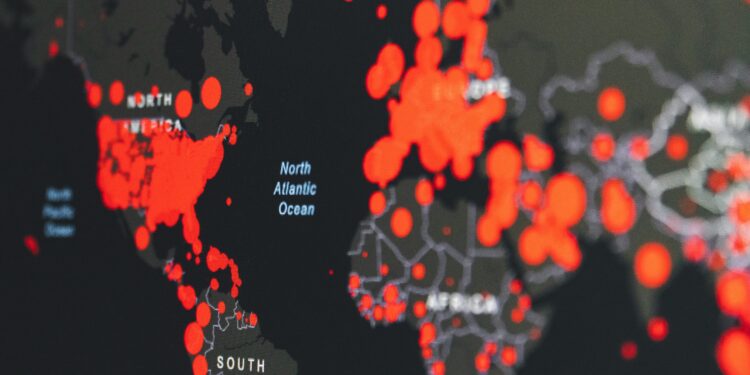In a historic moment steeped in symbolism and surrounded by palpable tension, the World Health Organization (WHO) adopted its first-ever legally binding Pandemic Agreement on May 20, 2025, in Geneva. With 124 member states affirming their commitment, the agreement’s passage marked a critical juncture in global health governance. Yet, even as delegates exchanged congratulations and handshakes, an underlying tension lingered—would geopolitical rivalries and sovereignty anxieties derail the noble aims of international solidarity?
Since its inception, the WHO has grappled with the complex dynamics of global cooperation amid national self-interest. The COVID-19 pandemic starkly revealed these tensions, laying bare the limitations of existing frameworks for equitable vaccine distribution, information sharing, and coordinated responses. The new Pandemic Agreement, born from these harsh lessons, seeks to rectify these gaps, enforcing shared responsibility while respecting national autonomy—a delicate dance at the intersection of geopolitics and international health policy.
Drafted over nearly four years of arduous negotiation and countless revisions, the treaty compels countries to swiftly share pathogen data, maintain readiness through periodic system stress-tests, and crucially, guarantee equitable access to vaccines and therapeutics during future global health emergencies. Central to the accord is a provision mandating that 20% of manufactured vaccines, treatments, and diagnostic tools be allocated to WHO-coordinated distribution networks, with half of these supplies earmarked for free delivery to lower-income countries. This ambitious clause underscores a commitment to rectify the catastrophic inequities observed during the COVID-19 pandemic.
However, the ratification process exposed deeper geopolitical fault lines. Notably absent were the United States and Argentina, both currently navigating withdrawals from the WHO, citing issues of national autonomy and governance concerns. This absence underscored a crucial tension: the balance between state sovereignty and the collective international good. Critics within absent countries argue the agreement infringes on domestic policymaking and potentially exposes proprietary information and innovations to international scrutiny. Proponents counter that pandemics, by nature, ignore borders and sovereignty, arguing vehemently that true security can only come from collective action.
Indeed, the debate extends well beyond health policy, reflecting broader geopolitical maneuvers. China, Russia, and the European Union actively participated, signaling willingness to cede limited aspects of sovereignty in exchange for global stability and health security. Yet, Poland, Italy, and Israel abstained, highlighting specific reservations about border control autonomy, intellectual property protections, and the extent of required data-sharing. The Polish delegation, for instance, voiced concern that mandated transparency might weaken their strategic position during crises, emphasizing the perpetual friction between openness and security.
The treaty also introduces innovative accountability measures intended to reinforce trust through transparency. A newly created independent compliance committee will routinely assess member states’ adherence, publishing public scorecards designed to encourage peer accountability rather than enforce punitive measures. This “soft” compliance mechanism, however, has skeptics questioning whether diplomatic peer pressure alone can ensure sustained cooperation when crises inevitably test national resolve.
Financial commitments further illustrate the complexities involved. The WHO estimates approximately $31 billion annually is needed to maintain robust global preparedness infrastructure, far exceeding current pledges. Discussions have proposed financing mechanisms such as levies on international air travel or digital transactions. Yet, the viability of these measures remains uncertain amid growing nationalistic economic policies and public fatigue over pandemic-related expenditures.
From a geopolitical standpoint, the agreement’s success hinges significantly on regional powers and emerging economies’ willingness to invest heavily in local production capacities. Lessons from the COVID-19 pandemic indicate that reliance on a handful of global vaccine production hubs led to profound inequities, reinforcing calls for decentralized manufacturing capabilities. The EU and Africa, through collaborations establishing mRNA vaccine hubs in Rwanda and South Africa, exemplify early promising efforts to correct such structural inequities, suggesting that robust regional coalitions might serve as a model for the treaty’s practical application.
Yet, the elephant in the diplomatic room remains: Can international cooperation hold firm in a world increasingly defined by nationalistic impulses and realpolitik? Historical precedents such as the Paris Climate Accord and the Framework Convention on Tobacco Control suggest mixed results. These agreements provide structural blueprints for action but rely heavily on voluntary adherence and diplomatic goodwill. The Pandemic Agreement’s architects have learned from these examples, embedding periodic review mechanisms that allow for iterative improvements—a pragmatic nod to the incremental nature of multilateral progress.
Ultimately, the Pandemic Agreement represents both a triumph of multilateralism and a stark reminder of its inherent fragility. Its adoption, while historic, initiates rather than concludes the complex work of global health governance. Whether this treaty proves to be a transformative tool or merely a symbolic gesture depends largely on the evolving interplay between geopolitics and public health imperatives.
In concluding remarks at the Geneva summit, WHO Director-General Dr. Tedros Adhanom Ghebreyesus encapsulated the cautious optimism of the moment, stating, “Today, solidarity prevailed—but tomorrow’s test will reveal if sovereignty can accommodate it.” As nations return home to begin implementation, the world watches closely, hopeful yet wary, knowing that history’s verdict on the Pandemic Agreement will hinge on whether nations prioritize collective survival over short-term national interests.
For now, optimism remains guarded, tempered by awareness of the precarious balance between sovereignty and solidarity that defines international health policy. The Pandemic Agreement, undeniably ambitious, now faces its greatest test: proving in practice what it so boldly proclaims on paper.















